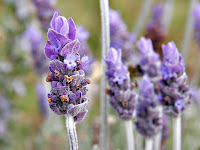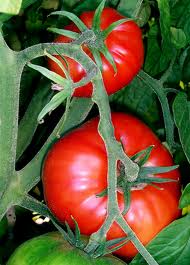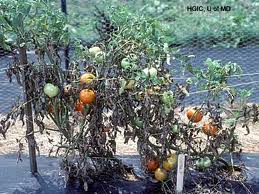As national online garden expert for Palmers, I am free to answer your garden questions.
Keep any gardening queries coming to the Facebook page called Palmers or their web site www.palmers.co.nz and I will answer in detail all of your queries.
Eden Living is still running in full swing as I work alongside NZ's largest garden retailer. If you prefer you can contact me directly through my web site www.edenliving.co.nz
Wherever you are in the country you have a Palmers near by and everything I talk about here is available at a store near you.
A lush prickle free lawn will be a hit for Summer
I love being outside. I will be outside relaxing even if it is dark and I love the fact that our house has lovely big windows that look to my outside. Even still; I think I annoy my husband with the need to be outside in the garden either pottering or mostly just relaxing if he is around as he is not a gardener, he is a "follow my instruction" and hope not to annoy him too much or it will be a while until help presents itself again!
Last night I went to a really fun event at Palmers Planet where Lynda Hallinan was speaking about her experiences as a gardener and promoting her book and whilst shopping I found a patio heater that must go on the Christmas wish list as this will keep dear husband outside with me for longer as a snuggle blanket does not cut it for him.
In summer the days a longer and outside begs for us to have picnics on the lawn, a G and T with a splash of lemon or a nap with a good book on that sweet freshly mown green rug - no matter how small the lawn is there is nothing worse than tip toein g anxiously for fear of PRICKLES! The Onehunga weed must have been a creation that was a cruel joke as it is one of those weeds that spread quickly, is green like the colour of grass and early in the season when things start to warm up in October and November when everyone is glad for outside time after a cold dark winter this weed sits patiently as if inviting us to be foot loose and fancy free, then come Summer - right around Christmas and wham! There you go; she has dried her weapon and they are sharp to boot and the prickle plant Onehunga is too late to spray and your lawn is in full swing of thousands of nasty pin prick sized needles until May! For the rest of summer you are plauged with warning kids and guests to stay off the grass... Yeah right, like that is practical! What I have to say about this is... It is October and is the time for spraying Onehunga weed so this coming long weekend on the 20th October then you have to dedicate some time to this task so Summer at your place is the unwind that it should be!
g anxiously for fear of PRICKLES! The Onehunga weed must have been a creation that was a cruel joke as it is one of those weeds that spread quickly, is green like the colour of grass and early in the season when things start to warm up in October and November when everyone is glad for outside time after a cold dark winter this weed sits patiently as if inviting us to be foot loose and fancy free, then come Summer - right around Christmas and wham! There you go; she has dried her weapon and they are sharp to boot and the prickle plant Onehunga is too late to spray and your lawn is in full swing of thousands of nasty pin prick sized needles until May! For the rest of summer you are plauged with warning kids and guests to stay off the grass... Yeah right, like that is practical! What I have to say about this is... It is October and is the time for spraying Onehunga weed so this coming long weekend on the 20th October then you have to dedicate some time to this task so Summer at your place is the unwind that it should be!
 WHAT TO SPRAY
WHAT TO SPRAY
If you are only worried about the prickles you can get away with using a specific product like Yates Prickle weedkiller. This is best applied in Sring before the seed heads have set - which is mid October. For an intensive broad leaf and prickle killer then something like Yates 'weed and feed' will be the best to use but be sure to read on when and what age of lawn is best to use such products as a young lawn can not cope with such abuse!
For the low down on everything you need to know about sowing, turf care, bug - like Porina treatment that eats your lawn from beneath then grab a cuppa and read on.
TO PREPARE A LAWN THAT IS TO BE SEED SOWN OR TURFED
Prepare the area by spraying all weeds that are growing in your proposed site and any existing ‘grass’ that is there with a broad spectrum weed killer like ‘Round Up’. Spray on a still day at the hottest time of the day. Do not spray if rain is in the forecast over the following 6 hours. Be careful not to spray plants that you want to keep as a product like ‘Round Up’ will kill everything it touches.
Wait 10 – 15 days until the weeds are yellow and very sick looking
Using a grubber or spade, scrape the area, taking enough dirt with the weeds to remove the weed roots. It will pay to dig out deep rooting weeds like dock first with a spade and remove the individual plants.
Rake the entire area to bring larger stones and sticks to surface and dispose of. Walk, or use a roller over the area to compact the soil and give a final rake to remove the footprints and loosen a fine layer of soil to enable the grass seed to establish its roots well.
Sow your grass seed. You can choose your lawn seed to match the conditions you need at your property. There is seed specific for growing in shade, high walking activity and play areas. It can take up to four weeks before greenness appears. Do not walk on the areas until it is 5cm long. Once your lawn is 5cm long, you must cut the lawn with a lawn mower set to the highest level to just trim the top of the grass. This makes the grass blades stronger. The third cut can be mown lower, but always keep the grass no shorter than 5cm. This helps keep the weeds at bay.
To deter birds from eating your seed. Cross string across the entire area at 1.5 meter spacing. Tie string around stakes pushed into the ground. Tie 5cm wide x 20cm lengths of tin foil at 2 m intervals to the string. The light reflected will deter birds from landing and eating your seed.
IF YOU NEED TO PRESERVE THE CURRENT GRASS AND TOP UP SEED TO YOUR LAWN THAT HAS CLOVER, ONEHUNGA (prickles) AND BROADLEAF WEEDS GROWING IN IT…
Prepare your lawn in Spring or Autumn. Do not weed spray a lawn that is under 6 months old.
Use a lawn fertiliser first to feed the lawn. Spread the granules with a seed spreader and water well. Once lawns (and weeds!) are green and lush (approximately 3 weeks) then spray using a weed kill product like ‘Yates weed n feed’ which will kill the weeds but not the grass.
Top up your lawn with lawn seed after the weeds have yellowed and burnt dry and completely dead (approximately 12 – 15 days). Remove the dead weeds before sowing.
Sow your grass seed. You can choose your lawn seed to match the conditions you need at your property. Tui produce seed that is specific for growing in shade or high walking activity and play areas. It can take four weeks before greenness appears. Do not walk on the areas until it is 5cm long. You can cut the lawn with a lawn mower set to the highest level to just trim the top of the grass.
To deter birds from eating your seed. Cross string across the entire area at 1.5 meter spacing. Tie string around stakes pushed into the ground. Tie 5cm wide x 20cm lengths of tin foil at 2 meter intervals to the string. The light reflected will deter birds from landing and eating your seed.
TIP: Old grass is usually infested with leather jacket beetles in Spring. These beetles eat the grass roots. To get rid of these bugs water the lawn in the evening and cover the area with plastic polythene or tarpaulin. In the morning the bugs would have come to the surface of the lawn and the birds will eat them!
ONCE A NEW LAWN IS SOWN OR YOUR EXISTING LAWN TOPPED UP…
Once you have a new lawn sown you need to water it daily in the early morning before the sun is intensely on it and in the late afternoon, but before nightfall to give the grass time to dry before it is dark.
 Happy Gardening everyone!
Happy Gardening everyone!
Maria Quayle-Guppy
Palmers Garden Consultant












































